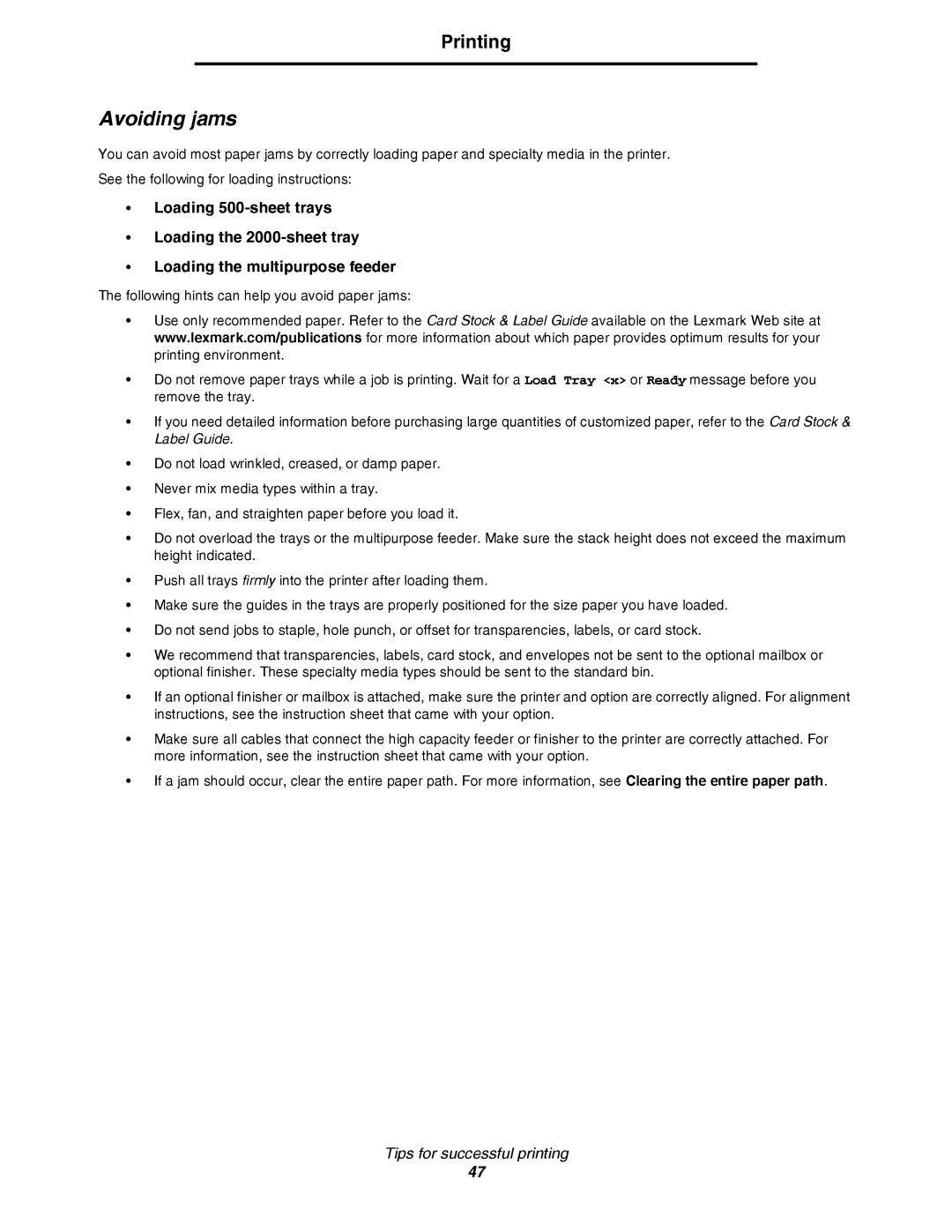Printing
Avoiding jams
You can avoid most paper jams by correctly loading paper and specialty media in the printer. See the following for loading instructions:
•Loading
•Loading the
•Loading the multipurpose feeder
The following hints can help you avoid paper jams:
•Use only recommended paper. Refer to the Card Stock & Label Guide available on the Lexmark Web site at www.lexmark.com/publications for more information about which paper provides optimum results for your printing environment.
•Do not remove paper trays while a job is printing. Wait for a Load Tray <x> or Ready message before you remove the tray.
•If you need detailed information before purchasing large quantities of customized paper, refer to the Card Stock & Label Guide.
•Do not load wrinkled, creased, or damp paper.
•Never mix media types within a tray.
•Flex, fan, and straighten paper before you load it.
•Do not overload the trays or the multipurpose feeder. Make sure the stack height does not exceed the maximum height indicated.
•Push all trays firmly into the printer after loading them.
•Make sure the guides in the trays are properly positioned for the size paper you have loaded.
•Do not send jobs to staple, hole punch, or offset for transparencies, labels, or card stock.
•We recommend that transparencies, labels, card stock, and envelopes not be sent to the optional mailbox or optional finisher. These specialty media types should be sent to the standard bin.
•If an optional finisher or mailbox is attached, make sure the printer and option are correctly aligned. For alignment instructions, see the instruction sheet that came with your option.
•Make sure all cables that connect the high capacity feeder or finisher to the printer are correctly attached. For more information, see the instruction sheet that came with your option.
•If a jam should occur, clear the entire paper path. For more information, see Clearing the entire paper path.
Tips for successful printing
47
